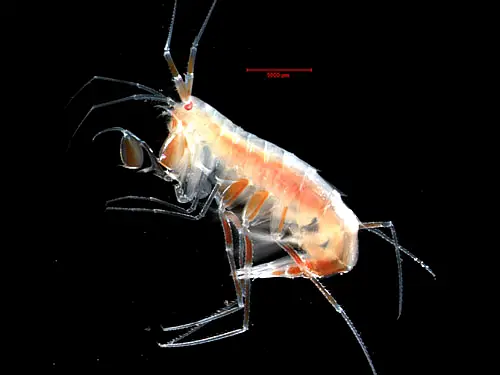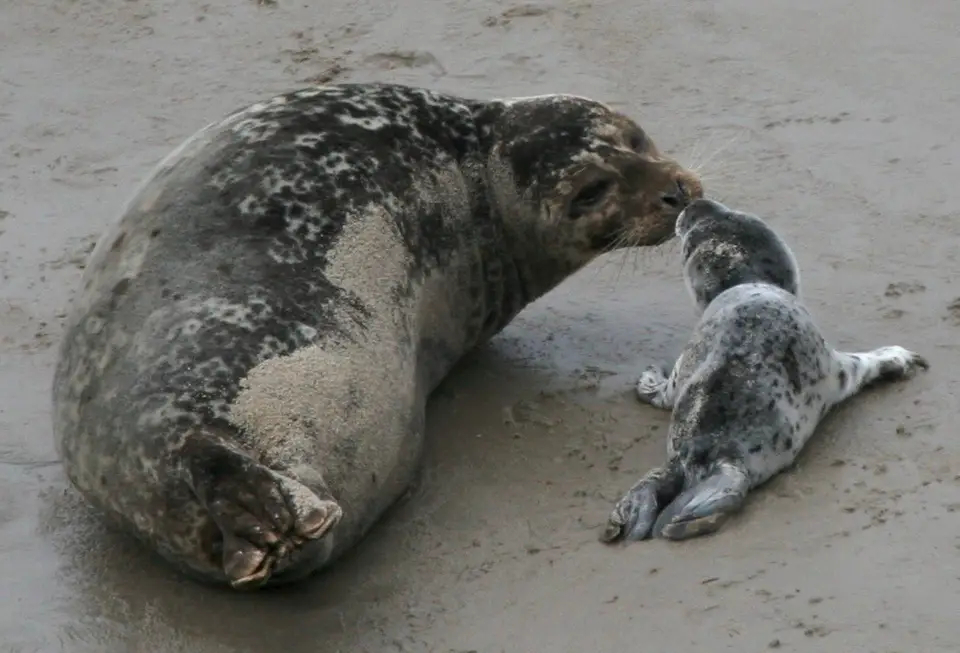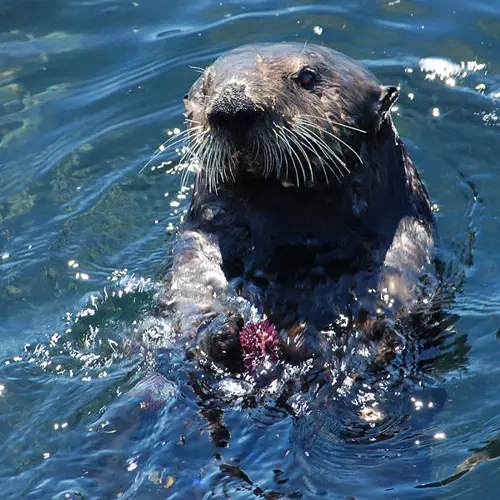Antarctic Krill
Krill are small crustaceans that are a great deal like shrimp and live an swim in the arctic seas.
Krill are pink and translucent, and congregate in very large groups, dense masses that are termed swarms or clouds, which turn the surface of the ocean bright pink. Krill are very important in ecology as part of the food chain, because many animals eat them.

The Krill range in size from less than an inche to about five inches
All in all there are about 85 different varieties, or species of Krill, which range in size from under half an inch up to about 5 and a half inches long.
The Antarctic Krill lives in the far southern polar oceans, and is about 2 and half inches long, weighing about a gram.
They have a lifespan in the wild of between five and ten years, which is rare for so small an animal.
The Antarctic Krill is what is called a keystone species, meaning that it is a keystone of life, or an organism which very many other species that live in the Antarctic, many other predators depend on.
Krill eat what are known as phytoplankton, which are small single celled plants that will float in the seas under the ice, near the top of the water.
The Krill will spend their daytime in the very darkest depths of the ocean, about 350 feet deep, where they are safe from the major predators that eat them, like baleen whales and a great many sea birds . Every night they will swim to the top to eat the phytoplankton.
Krill are unique in that they can go for as long as 200 days without eating anything, during which time, rather than become The Krill has what is called an exoskeleton, which means that its skeleton grows on the outside of its body and as the krill grows it will shed its skeleton many times.
Krill have many legs which they use to gather food and to help them swim, and a body that is divided into segments.
The Krill female will make about a thousand eggs every summer, and lay them at the top of the water, and let them simply fall to the depths.
The hatching’s swim back to the surface to feed. Like all crustaceans, krill molt their exoskeleton as they grow.
Phytoplankton is eaten by krill (and many other organisms). Krill are eaten by many organisms, including fish, which are in turn eaten by the whales and sharks, .. making them an important part of the food chain.
Krill themselves are also eaten by squid, sea birds, and mammals (like baleen whales and some seals).



Your picture of a krill is not a krill, but an amphipod, probably Eusirus holmi, and probably a picture by Russ Hopcroft with no credit.
i think krill are cool
test
im doing krill for homework and i love this website